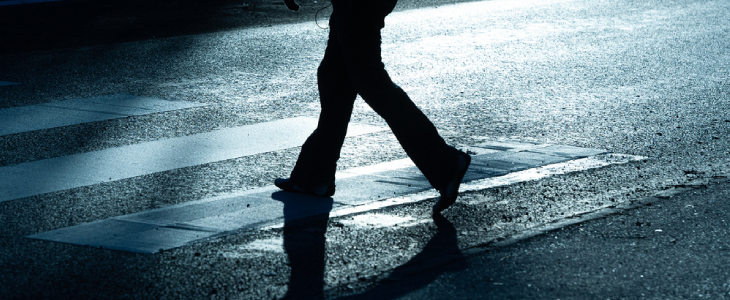It’s common to believe that pedestrians always have the right-of-way. However, this is not always the case. In fact, there are various traffic rules that require pedestrians to yield to vehicles in various circumstances. With that being said, California drivers have a special duty of care toward pedestrians, even when they are breaking the law.
Lack of knowledge in these matters is a major cause of accidents and injuries. Hence, knowing what the rules are relating to pedestrians can help you avoid being injured as a pedestrian yourself or harming a pedestrian in a right-of-way accident.
Defining Pedestrian
It can be helpful to first understand the definition of a pedestrian according to California law. In California, a pedestrian is more than a person on foot. The term also encompasses:
- People in motorized wheelchairs
- Skateboard riders and roller skaters
- People using non-electric scooters
- People using non-motorized wheelchairs
- People using ice skates and skis
People not considered pedestrians include those using bicycles, electric scooters, hoverboards, and motorized or electric bikes.
When Pedestrians Have the Right-of-Way
The law is clear in California that drivers of motor vehicles are required to yield the right-of-way to pedestrians when a pedestrian is in a marked or unmarked crosswalk at an intersection. But keep in mind that this law does not give pedestrians carte blanche to step out into an intersection whenever they please and expect vehicles to stop.
The same statute that outlines the pedestrian right-of-way rules in California also places a legal responsibility upon the shoulders of pedestrians, requiring them to always cross the street in a reasonably safe manner. For example, a pedestrian who steps into a busy intersection on a red light is not behaving reasonably.
Exceptions
As with most laws, there are exceptions to pedestrian right-of-way laws in California. These exceptions typically apply when a pedestrian is acting unreasonably, such as when the pedestrian is:
- Using the bike lane for walking when a sidewalk or walking path is available
- Crossing a street that does not have a crosswalk
- Entering or crossing an intersection against a “don’t walk” sign or a red light
- Crossing the street outside a crosswalk when an immediate danger is posed by enough nearby vehicles
Additionally, no pedestrian is permitted to suddenly enter an intersection when an oncoming vehicle is close enough to present an immediate hazard.
What is a crosswalk under California law?
California specifically defines a crosswalk as a section of roadway that acts as an official extension of the sidewalk, or any section of roadway expressly designated as a pedestrian crossing.
Crosswalks serve to protect pedestrians as they transit traffic. They also give drivers a degree of predictability and stability by keeping all pedestrians in the same crossing areas.
What happens when a pedestrian accident occurs?
After a pedestrian accident, the pedestrian will likely need medical care and treatment. Once they receive this care, they may be entitled to pursue compensation against the driver who hit them.
However, not all traffic accidents involving pedestrians are caused by someone other than the pedestrian. What happens if the pedestrian is to blame partially or totally?
If the pedestrian is to blame, the victims can bring a suit against the pedestrian. What tends to occur in many cases is that the pedestrian and the driver who hit them share a percentage of the blame. When this is the case, the responsibility or the resulting damages are split according to the degree of fault.
How a California Traffic Accident Lawyer Can Help
Were you involved in a pedestrian accident or other traffic issue? The experienced team of Saeedian Law Group in Los Angeles can examine the unique details of your case and fight for every dollar you deserve. Contact us to schedule a free consultation with a skilled California personal injury lawyer today.
